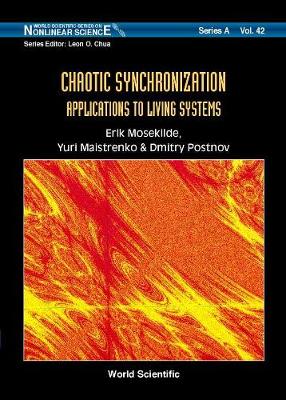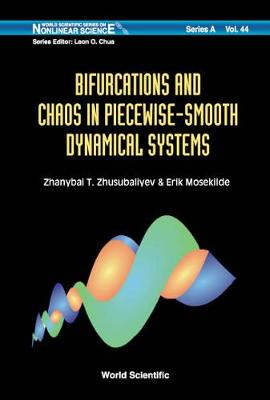World Scientific Series on Nonlinear Science Series A
2 primary works • 3 total works
Book 42
Chaotic Synchronization: Applications To Living Systems
by Yuri L Maistrenko, Erik Mosekilde, and Dmitry Postnov
Published 1 January 2002
Interacting chaotic oscillators are of interest in many areas of physics, biology, and engineering. In the biological sciences, for instance, one of the challenging problems is to understand how a group of cells or functional units, each displaying complicated nonlinear dynamic phenomena, can interact with one another to produce a coherent response on a higher organizational level.This book is a guide to the fascinating new concept of chaotic synchronization. The topics covered range from transverse stability and riddled basins of attraction in a system of two coupled logistic maps over partial synchronization and clustering in systems of many chaotic oscillators, to noise-induced synchronization of coherence resonance oscillators. Other topics treated in the book are on-off intermittency and the role of the absorbing and mixed absorbing areas, periodic orbit threshold theory, the influence of a small parameter mismatch, and different mechanisms for chaotic phase synchronization.The biological examples include synchronization of the bursting behavior of coupled insulin-producing beta cells, chaotic phase synchronization in the pressure and flow regulation of neighboring functional units of the kidney, and homoclinic transitions to phase synchronization in microbiological reactors.
Book 44
Technical problems often lead to differential equations with piecewise-smooth right-hand sides. Problems in mechanical engineering, for instance, violate the requirements of smoothness if they involve collisions, finite clearances, or stick-slip phenomena. Systems of this type can display a large variety of complicated bifurcation scenarios that still lack a detailed description.This book presents some of the fascinating new phenomena that one can observe in piecewise-smooth dynamical systems. The practical significance of these phenomena is demonstrated through a series of well-documented and realistic applications to switching power converters, relay systems, and different types of pulse-width modulated control systems. Other examples are derived from mechanical engineering, digital electronics, and economic business-cycle theory.The topics considered in the book include abrupt transitions associated with modified period-doubling, saddle-node and Hopf bifurcations, the interplay between classical bifurcations and border-collision bifurcations, truncated bifurcation scenarios, period-tripling and -quadrupling bifurcations, multiple-choice bifurcations, new types of direct transitions to chaos, and torus destruction in nonsmooth systems.In spite of its orientation towards engineering problems, the book addresses theoretical and numerical problems in sufficient detail to be of interest to nonlinear scientists in general.


